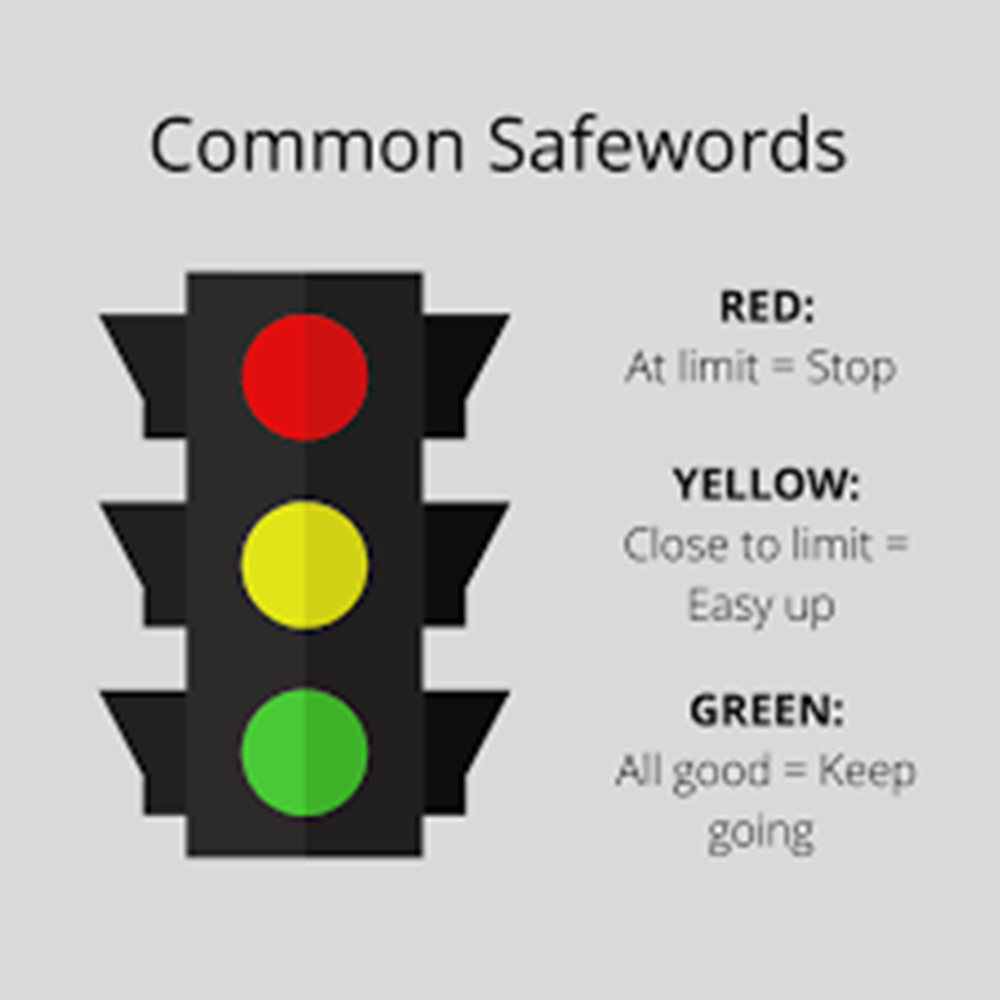Navigation
What is a safe word?
Wikipedia definition: In BDSM, safewords are a series of codes or other signals used to communicate their physical or emotional state, usually when approaching or crossing physical and emotional limits.
In other words, I give you the power to control me and dominate me according to your ideas, then I must have the power to stop at any time, so that we are still equal in the macro sense.
Is a safeword necessary?
If you know your partner better than their own folks, better than a parasite in their gut, then you can ditch the safe word. Now, putting aside whether that's even possible – let's just assume it is for a second. Would you really not need a safe word then?
I remember this one time with my ex, Jax. I mean, I knew Jax was tough as nails. I'd be screaming bloody murder from something that was just a warm-up for them. Their pain tolerance was off the charts, seriously.
But then, one time, I barely gave Jax the first slap – nothing heavy, just a casual tap for us. And immediately, he yelled the safe word. I was thrown for a loop because normally, that's just baseline for us.
Turns out, when my hand connected, Jax had just slightly opened his mouth, and the impact made them bite their tongue. From the outside, I saw nothing. There was no way I would have known about that kind of unexpected situation unless they used the safe word to tell me.
So, even with all that deep understanding, sometimes stuff happens that you just can't see or anticipate.
A safe word is largely about managing the stuff you can't see coming. Like, no matter how deeply you understand someone, there are always going to be those curveballs thrown your way.
Unless, you're Doctor Strange chilling with the Time Stone, mapping out all 14,000,605 possible outcomes. If that's you, then, hey, my bad, you do you! But for the rest of us regular folks, that safe word is seriously our best bet for a safety net.
Why can’t we just use “Stop!” as the safe word?
You know that old line, "When she says no, she means yes"? It's a joke, of course, but honestly, you see shades of it, even in BDSM.
Sometimes, with intense pain or pleasure, people get hit with a rush of endorphins. They're loving it, totally comfortable, and want more, but they're still yelling "No!" or "Stop!"
Psychologists actually call this consensual non-consent. Wild, right?
So, imagine an old married couple trying to spice things up. They agree to "play act" a rough scenario – one pretends to "rape," the other "resists." Both know it's not real; the "no" is part of the game.
But here's the catch: what if someone goes too far? That's when a "no" becomes genuine. A real "no" means stop immediately because the pain isn't fun anymore; it's actual distress.
See, the first "no" has no real meaning, but the second one is a hard stop. That's why using words like "No!" or "Stop!" as a safe word is super confusing. You need something clear and distinct for your safe word.
Some common safe words
Here's a universally recognized safe word system I'd definitely recommend: the traffic light system, or CNC rules. It's super simple and uses three colors to signal how the passive partner is feeling:
•Red: This means everything stops, right now. No questions asked, no hesitation.
•Yellow: This is your "slow down" or "take a breather" signal. Maybe things are a bit too intense, or they just need a moment to collect themselves.
•Green: All clear! Keep going, everything's good.

The beauty of this system is that the passive person can call out the color at any time, and the active person can also check in by asking, "What color are you?"
The huge upside here is that it's not just an "on" or "off" switch. That yellow signal provides a crucial middle ground, allowing for adjustments and breaks before things ever get to a "red" situation. It's all about communication and making sure everyone's comfortable and safe.
-
$62.91$69.90
-
$55.71$61.90
-
$73.02$85.90





.jpg)
.png)
.png)
.png)




.webp)



